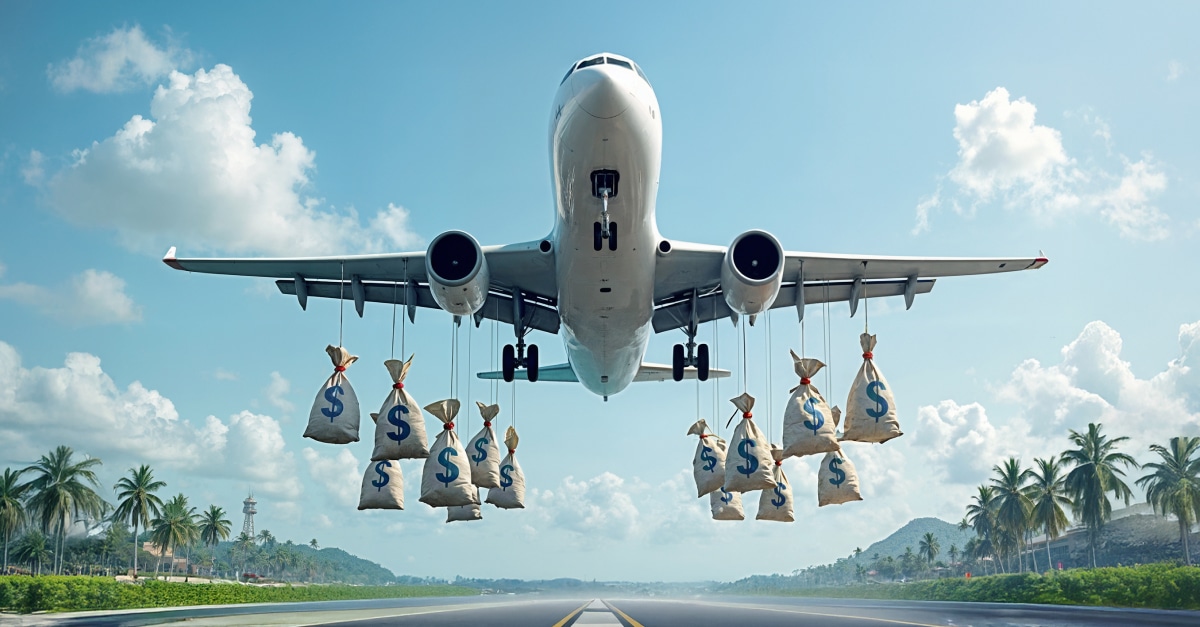Travel has an abuse problem. Airlines, in particular, have a problem with service chargebacks — and it’s getting too glaring to ignore.
When it comes to travel — and especially airlines, which dominate this issue — the non-fraud chargeback (CB) rate is 50% higher than the fraud chargeback rate. It’s not that fraud chargebacks are going down, unfortunately. It’s that service chargebacks are much more than anyone seems to realize.
What’s happening, who’s getting hit, and what can we do? Let’s dive in.
A Problem Measured in Dollars
When I say that the non-fraud CB rate is 50% higher than the fraud CB rate, I’m talking about the rate as measured in dollars. When you look at the transaction count, the weighting is reversed; fraud CBs represent about 60% of total chargebacks.
What this means is that not only have service chargebacks grown in travel, but they also tend to be for large ticket amounts — more so than fraud chargebacks.
This is a problem that has a direct and profound bottom-line impact.
The Service Chargebacks Story
The increase in service chargebacks started around June 2022. There were other industries with similar sorts of disruptions at the time. The coronavirus pandemic was a tough time to be a business.
The difference is that this trend has stuck around with travel, and the numbers in 2025 are similar to what they were in 2022. This trend seems to be here to stay, unless the industry starts to act on it to change things.
So why are consumers so tough on travel, and airlines in particular? I think there are a range of factors that combine to pile on the pressure:
- It’s expensive, which is reflected in the high ticket nature of the chargebacks; people aren’t willing to let that amount go, and they also have higher expectations due to price.
- Time is often of the essence for travelers, and refund or rebooking processes can be cumbersome. Chargebacks are easier, even if they’re not the right fit for the issue.
- Air travel can go wrong in many ways, with delays caused by anything from mechanical failures to weather conditions to late passengers or even geopolitical turmoil.
- Airlines have been in the headlines for making changes that are just within the limits that allow them not to reimburse or rebook passengers, but this is frustrating when it’s a pattern.
- There’s a lot of choice when it comes to finding travel alternatives.
- Many airlines offer rebooking within their airline or refunds in the form of points or credit, but passengers may prefer to take their money and go elsewhere.
Whatever the combination is that a specific passenger is feeling, the overall sentiment seems to be one of rising dissatisfaction — leading to expensive service chargebacks.
For Online Travel Agencies, it’s Pure Pain
Although this problem is particularly centered around airlines, they’re not the only companies affected. There’s a knock-on effect throughout the travel chain. When flights are rebooked, car rentals, hotel or Airbnb check-ins, and restaurant or entertainment reservations must also be juggled.
The worst impact is on online travel agencies (OTAs). Because the flight was booked through them, they get landed with the loss — even though they have absolutely no control over the flights or the services that customers are receiving away from their site.
A Surprising Source of Help
This can feel like an intractable problem. Flights will move around, passengers will get frustrated, and some of them will charge back. What can a merchant do to mitigate the impact on their business when they’re not at the heart of the challenge?
There is something that we’ve seen be effective from a somewhat surprising direction. It comes from digging into the data.
The research of Forter’s analysts suggests that, in many cases, a relatively small number of airlines or airports are responsible for the majority of any given company’s non-fraud chargebacks. Once you know which those are for you, you can implement different payment strategies to protect your business.
It’s a form of dynamic friction. You might not want to use 3DS across your site, for instance, but if you know that you get most of your service chargebacks from seven airports, then strategically applying 3DS to flights to and from these airports could dramatically mitigate the risk for your business while adding only minimal friction for your users.
Time to Face the Abuse Reality
Wherever your non-fraud chargebacks come from, and whatever you decide to do about them, the first step in dealing with them is facing the problem. This form of abuse has flown under the radar for too long, and it’s been around long enough to show it won’t go away by itself.
It’s time to face the abuse reality and take action.



